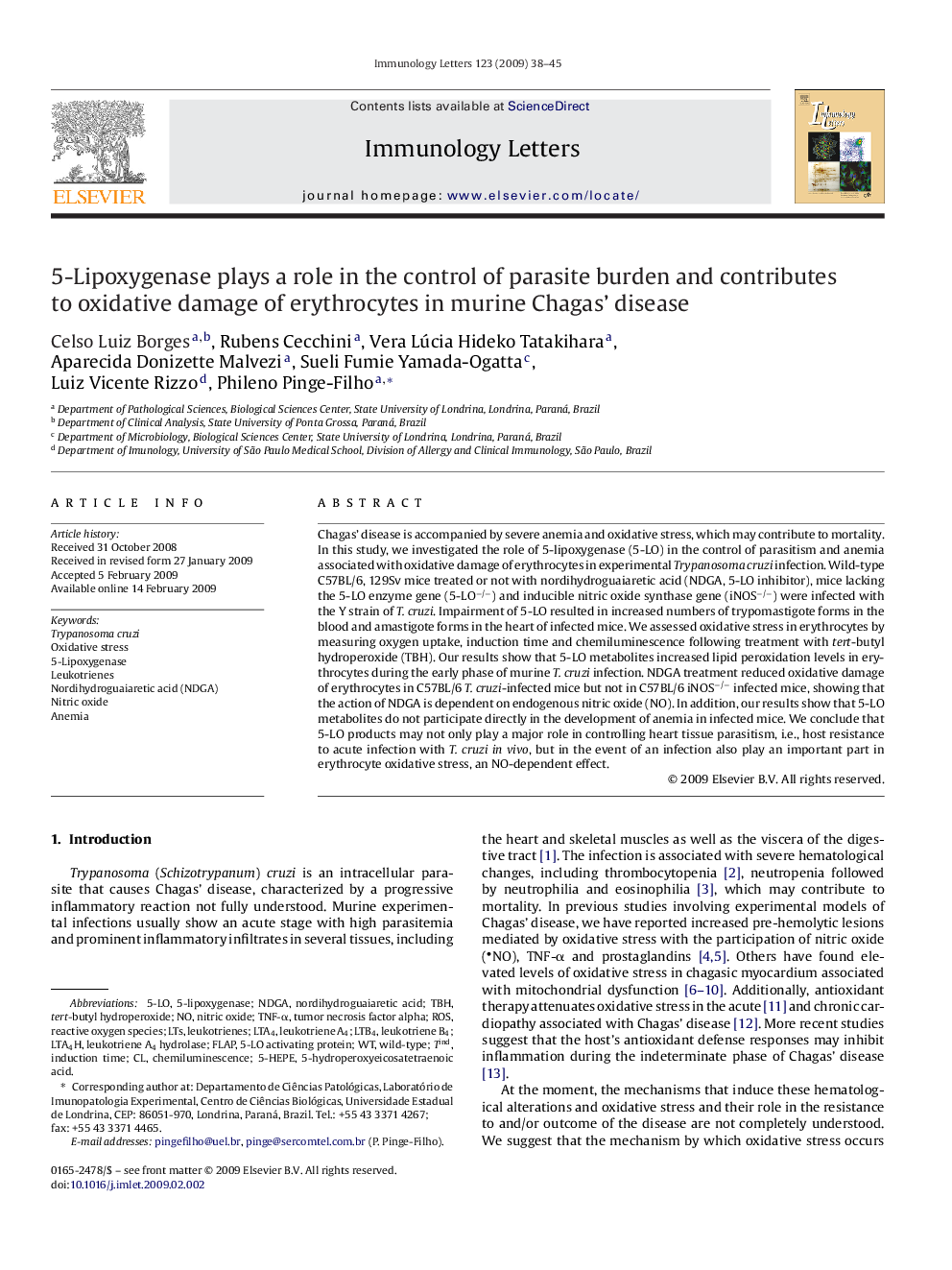| Article ID | Journal | Published Year | Pages | File Type |
|---|---|---|---|---|
| 3355937 | Immunology Letters | 2009 | 8 Pages |
Chagas’ disease is accompanied by severe anemia and oxidative stress, which may contribute to mortality. In this study, we investigated the role of 5-lipoxygenase (5-LO) in the control of parasitism and anemia associated with oxidative damage of erythrocytes in experimental Trypanosoma cruzi infection. Wild-type C57BL/6, 129Sv mice treated or not with nordihydroguaiaretic acid (NDGA, 5-LO inhibitor), mice lacking the 5-LO enzyme gene (5-LO−/−) and inducible nitric oxide synthase gene (iNOS−/−) were infected with the Y strain of T. cruzi. Impairment of 5-LO resulted in increased numbers of trypomastigote forms in the blood and amastigote forms in the heart of infected mice. We assessed oxidative stress in erythrocytes by measuring oxygen uptake, induction time and chemiluminescence following treatment with tert-butyl hydroperoxide (TBH). Our results show that 5-LO metabolites increased lipid peroxidation levels in erythrocytes during the early phase of murine T. cruzi infection. NDGA treatment reduced oxidative damage of erythrocytes in C57BL/6 T. cruzi-infected mice but not in C57BL/6 iNOS−/− infected mice, showing that the action of NDGA is dependent on endogenous nitric oxide (NO). In addition, our results show that 5-LO metabolites do not participate directly in the development of anemia in infected mice. We conclude that 5-LO products may not only play a major role in controlling heart tissue parasitism, i.e., host resistance to acute infection with T. cruziin vivo, but in the event of an infection also play an important part in erythrocyte oxidative stress, an NO-dependent effect.
